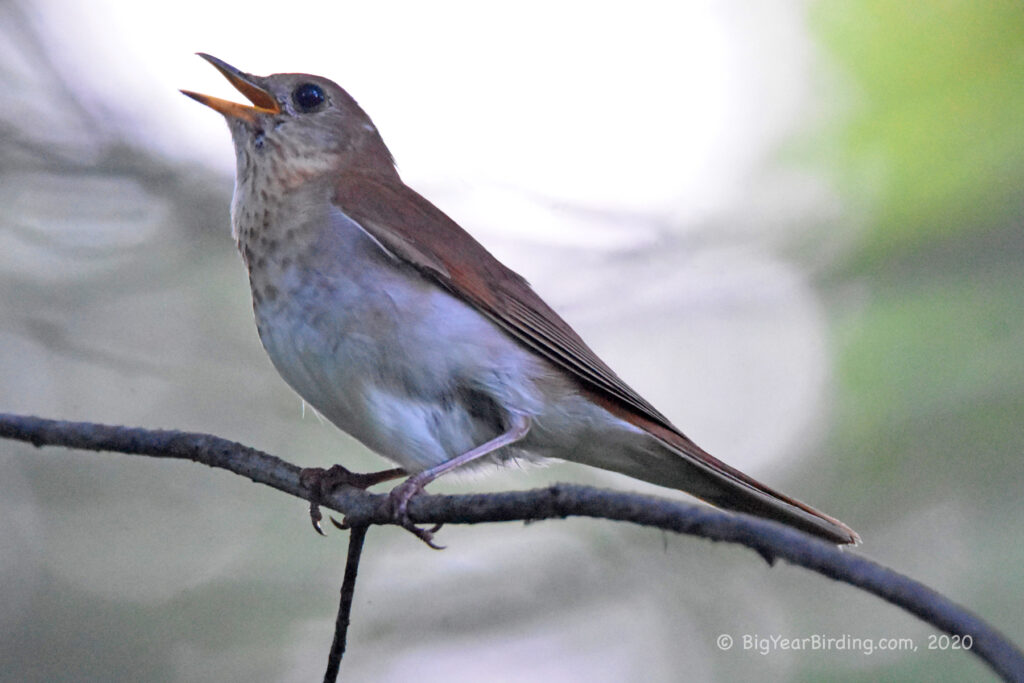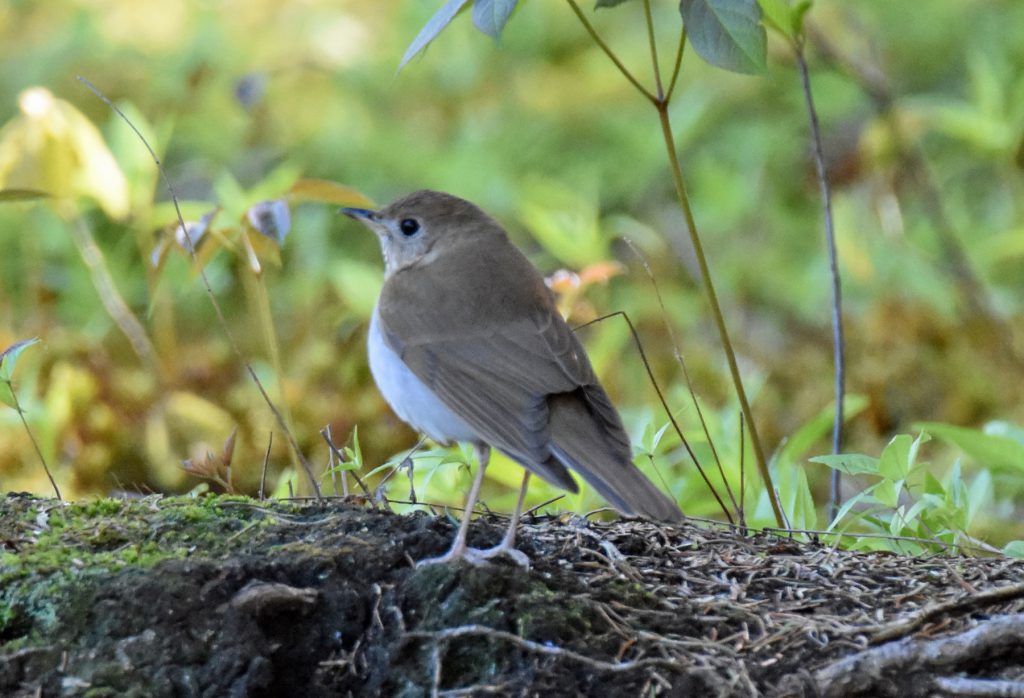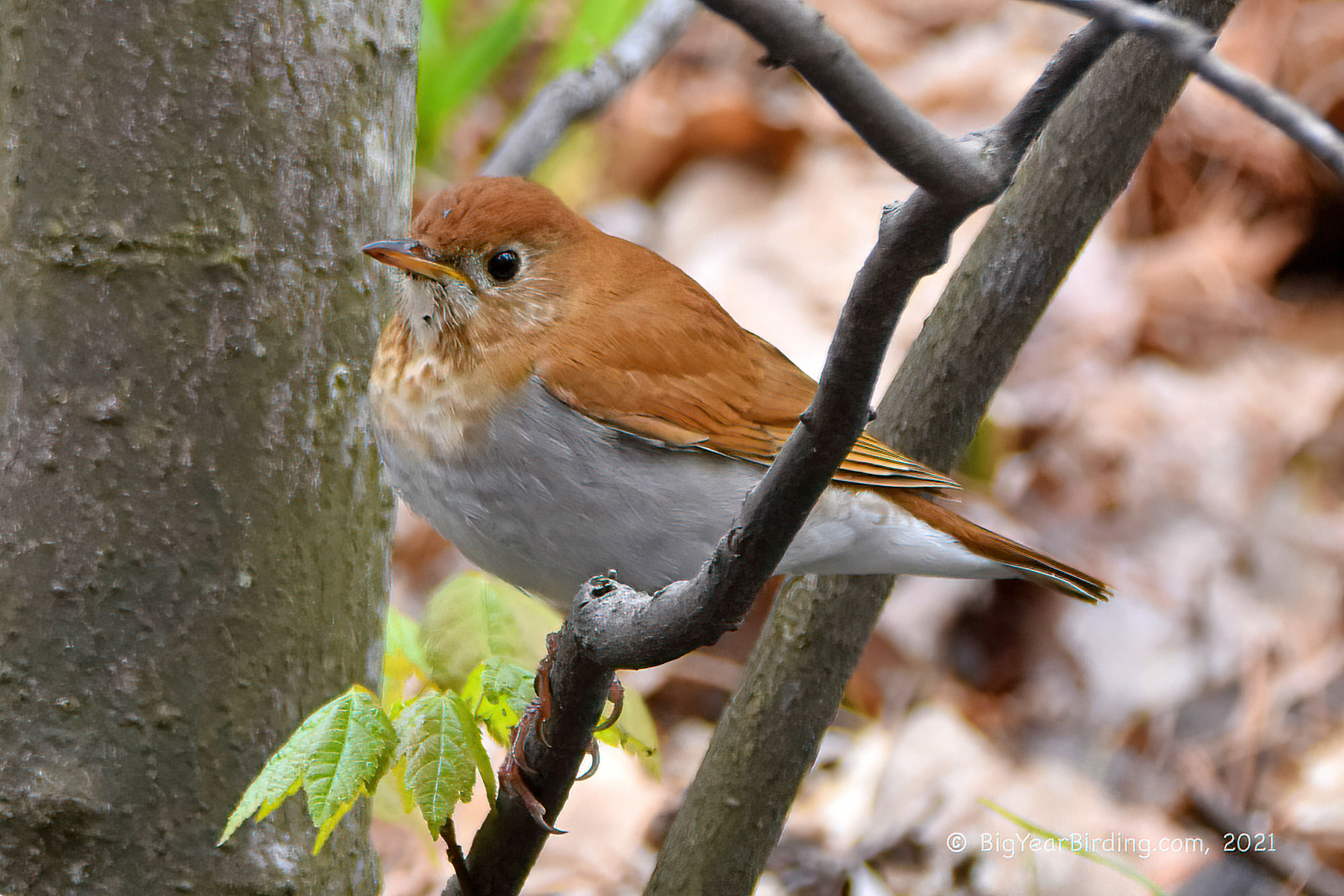The Veery is a medium-sized thrush that is widely distributed throughout the eastern half of North America. They measure about 7-8 inches in length and have a wingspan of approximately 12 inches. Veeries typically weigh between 1.2-1.8 ounces, with males being slightly larger than females. Their plumage is a rich, cinnamon-brown color on the back and wings, with a creamy white belly and throat. They have dark spots on their breast and a distinct eye ring.

One of the distinguishing features of the Veery is its song, which is a beautiful, ethereal series of flutelike notes. This song is often heard in the early morning and evening during the breeding season. The Veery is also known for its unique feeding behavior. They will often hop along the forest floor, searching for insects, worms, and snails to eat. Veeries are also known to eat berries during the fall migration.
Veeries are a migratory species and spend the breeding season in the eastern half of North America, from the northern United States to southern Canada. During the fall, they migrate to their wintering grounds in Central and South America. Veeries are known for their long-distance flights, with some individuals traveling up to 2,500 miles in a single journey. They begin their migration in late summer and return to their breeding grounds in the spring.
The Veery is one of several thrush species that are experiencing population declines. Habitat loss and fragmentation are major threats to this species, as they rely on intact forest ecosystems for breeding and foraging. Climate change is also affecting the Veery’s breeding and migration patterns, as changes in temperature and precipitation can impact the timing and success of breeding and migration. Conservation efforts are underway to protect and restore Veery habitat and to better understand the ecological factors that affect their survival.

In summary, the Veery is a medium-sized thrush with a rich, cinnamon-brown plumage and a distinctive song. They are migratory birds that travel long distances to breed and winter, and they rely on intact forest ecosystems for their survival. Habitat loss and fragmentation, as well as climate change, are major threats to this species, and conservation efforts are needed to protect and restore their habitat.

